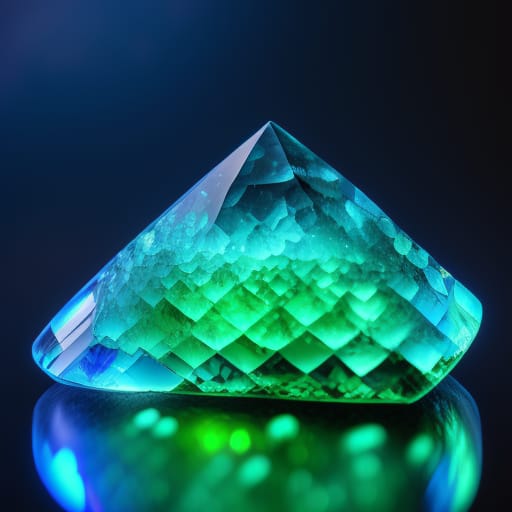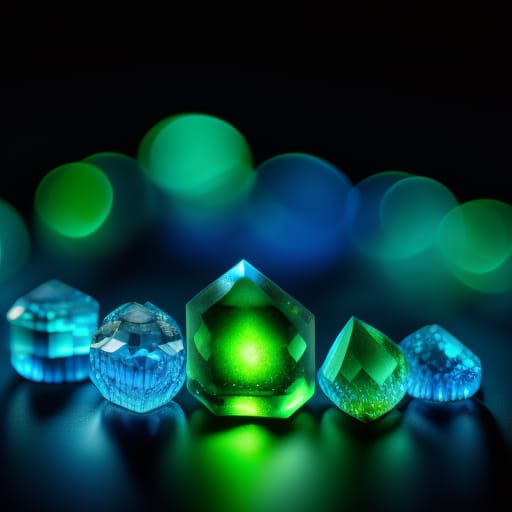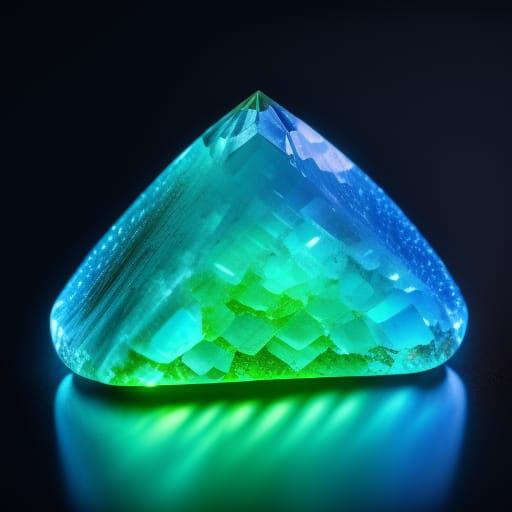Have you ever looked closely at a crystal and marveled at its unique geometric shape and structure? Growing your own crystals at home is an enjoyable science experiment that allows you to observe this enchanting process up close. In this beginner’s guide, you’ll learn the science behind crystal formation, helpful tips for successful crystal growth, and step-by-step instructions for a variety of crystal growing projects.

What Are Crystals and How Do They Form?
Crystals are solids made up of a repeating, symmetrical pattern of molecules or atoms. The process by which these particles come together to form a structured crystal is known as crystallization.
Crystallography is the scientific study of crystal structure and formation. It examines the arrangement of atoms and molecules within a crystal on an atomic scale. Understanding these molecular interactions allows scientists to explain a crystal’s characteristics like shape, hardness, and optical properties.
For a crystal to form, the solution must be supersaturated. This means the solution contains more dissolved solute particles than the solvent can normally dissolve at that temperature. As the saturated solution cools or water evaporates, the excess solute crystallizes out of the solution.
The solute particles align themselves in an orderly, geometric pattern as the crystal grows. The growth rate and final shape are determined by environmental factors like temperature, pH levels, and the presence of impurities. With careful control of these conditions, it’s possible to grow large, beautifully-formed crystals at home.
Helpful Tips for Crystal Growing Success
Growing impressive, well-defined crystals takes patience and care. Here are some tips to help your crystals reach their full potential:
- Use distilled water for your solution. Tap water contains impurities that can disrupt crystal formation.
- Filter your solution through coffee filters or cheesecloth to remove any particles.
- Use a glass jar or clear plastic container so you can observe the crystals as they grow.
- Cover the container to slow evaporation, but don’t seal it completely. Some air exchange is needed.
- Control the temperature. Warmer temperatures speed up crystal growth but may cause defects.
- Choose a quiet spot away from vibrations. Crystals are fragile as they form.
- Avoid moving or disturbing the setup once crystals start growing.
- Add a pre-made “seed crystal” to provide a template for growth.
- Use a fishing line or a crystal growing stand to suspend the seed crystal in the solution.
- Be patient! Large crystals can take days or weeks to fully form.
Step-by-Step Crystal Growing Projects
Now let’s look at some specific crystal growing projects you can try at home using common household materials.
Rock Candy
Rock candy is made by crystallizing sugar out of a supersaturated sugar solution. These crystals form on a stick, creating edible “rock” candy.
Supplies:
- 2 cups granulated sugar
- 1 cup water
- Glass jar
- Wooden skewer, chopstick, or pencil
- Clothespin or tape
Instructions:
- Boil the water in a saucepan. Slowly stir in the sugar until completely dissolved. Remove from heat.
- Let the sugar solution cool slightly. Pour into the glass jar.
- Tie the skewer to the middle of the clothespin or pencil with tape.Clip the top of the stick to the rim of the glass so it hangs vertically in the solution without touching the bottom.
- Cover the jar and place it in a safe location, undisturbed.
- Check daily and watch rock candy crystals begin to form on the stick after 3-7 days.
- Allow the crystals to grow for 7-10 days until they reach the desired size. They’re ready to eat!
Borax Snowflakes
These sparkly snowflake crystals grow as borax precipitates out of a supersaturated borax solution.
Supplies:
- 1 cup borax powder
- 3 cups boiling water
- Small jar with lid
- Pipe cleaner
- Scissors
- String
Instructions:
- Dissolve the borax powder in the boiling water. Let cool completely.
- Cut the pipe cleaner into a snowflake shape. Bend the points to give dimension.
- Tie string in a loop around the center of the “snowflake.”
- Pour the cooled borax solution into the jar so it’s 1-2 inches deep.
- Suspend the snowflake ornament in the center of the jar without touching the bottom.
- Cover the jar and set aside for 3-6 hours, until crystals form on the snowflake.
- Remove the snowflake ornament carefully and allow it to dry completely before handling.
Epsom Salt Crystals
Epsom salt (magnesium sulfate) easily forms large, transparent crystals that seem to sparkle.
Supplies:
- 1 cup Epsom salt
- 1 cup very hot water
- Glass bowl
- Glass jar or plastic container
- Cookie sheet
- A wooden skewer or popsicle stick
Instructions:
- Stir the Epsom salt into the hot water until completely dissolved. Allow to cool.
- Pour the cooled solution onto a cookie sheet. Allow all water to fully evaporate.
- Place the Epsom salt crystals from the cookie sheet into the glass jar.
- Boil 1 cup of water. Allow to cool slightly before pouring into the jar over the Epsom salt.
- Place the wooden skewer into the center of the jar, resting on the rim so it stands upright.
- Cover the glass loosely and place undisturbed in a cool, dark area.
- Wait 7-10 days, refilling with water as needed to replace evaporation.
- Harvest crystals once they reach an appropriate size by gently pulling the skewer out.
Science Learning Opportunities
Crystal growing experiments provide hands-on science experiences for students of all ages. Here are some of the science concepts that can be explored:
- Solubility: Investigate what dissolves quickly in water vs. slowly. See how temperature affects solubility.
- Saturation: Learn how much solute can dissolve in a solvent before reaching the saturation point.
- Crystallization: Observe how crystals form over time as a supersaturated solution moves towards equilibrium.
- Molecular structure: Examine crystal shapes and symmetries to better understand molecular alignment and bonding.
- Density: Measure crystal mass and volume to calculate density. Compare densities of different crystal types.
- Phase changes: Watch the phase change from dissolved solid particles in a liquid solution to solid crystal formation.
- Patience and observation: Cultivate patience, attention to detail, and perseverance through long-term observation.
So while crystal growing is fun, it’s also rich with STEM learning opportunities!
Exploring Crystal Structures and Shapes
Crystals form in many different geometrical shapes based on the internal arrangement of their molecules:
Cubic crystals like salt and borax have atoms arranged in cube-shaped patterns, so the overall crystal also reflects this shape.
Hexagonal crystals like quartz have six-sided symmetry.
Monoclinic crystals like gypsum form in two prismatic planes.
Triclinic crystals have atoms arranged with no symmetrical plane orientation. Each axis is a different length.
In addition to molecular structure, growth conditions also influence crystal shape. A crystal may start with a characteristic shape based on its internal structure, but environmental factors can cause distortions or irregularities.

Common Crystal Growing Problems and Solutions
Don’t get discouraged if your first attempts at crystal growing don’t go smoothly. Here are some common issues and how to resolve them:
Problem: No crystals form or crystals stop growing
Solution: The solution may not be supersaturated enough. Try dissolving more solute into the solvent and reducing evaporation.
Problem: Crystals are small or poorly shaped
Solution: There are too many nucleation sites competing for growth. Filter the solution, use a seed crystal, or slow evaporation.
Problem: Crystals have defects like holes or discoloration
Solution: Contamination is disrupting the pattern. Ensure tools are clean and conditions remain stable.
Problem: Crystals are growing too quickly
Solution: Lower the temperature slightly to slow crystal growth. Rapid growth causes defects.
Don’t get discouraged by crystal growing failures! Part of the fun and learning is troubleshooting issues through experimentation.
Safety Tips for Crystal Growing
While crystal growing is generally safe, here are some basic safety guidelines when working with chemicals:
- Read warning labels and instructions carefully
- Work in a supervised area if young children are involved
- Wear gloves, eye protection, and a mask when handling dry chemicals
- Use care when working near heat sources or boiling water
- Handle glass containers with care to prevent breaks and cuts
- Follow disposal instructions for any chemicals, or allow to fully dry and place in normal trash
With reasonable precautions, you’ll be able to enjoy crystal growing activities safely!

Ready to Grow Your Own Crystals?
Crystal growing is an engaging hands-on science experience for all ages. With just some common household materials and the step-by-step guides and tips in this article, you’ll be ready to grow your own sparkling creations!
The science and art of crystallography is widely used in geology, chemistry, physics, and materials science to examine natural formations and develop new compounds. But you don’t need an advanced degree to experience the wonders of crystals. Growing crystals at home allows you to observe their symmetrical structures and magical formations up close.
So give it a try! Then enjoy showing off your crystalline masterpieces. Just be prepared for everyone to ask “How did you grow those!”
Helpful Resources
To learn more about the science of crystallography and explore advanced techniques for crystal growing, check out these helpful resources:
Crystallography 101 Video Series – YouTube video tutorial beginner’s guide to crystallography
International Union of Crystallography – Leading scientific organization focused on advancing crystallography
Crystal Growth 101 by David Wilber – Accessible textbook for learning crystal growth chemistry
Journal of Crystal Growth – Academic journal publishing crystal growth research
r/crystalgrowing – Reddit community for crystal growing enthusiasts
Happy crystal growing!
Frequently Asked Questions
What are the best crystals to grow for beginners?
Some of the easiest crystal growing kits for beginners are alum crystals, salt crystals, and Epsom salt crystals. These form large, beautiful crystal shapes and structures without requiring specialized equipment. Start with one of these before trying more advanced crystal growing projects.
How can I make my crystals grow faster?
Patience is key for crystal growth, but you can speed things up. Use a warm area around 100°F. Ensure the solution is highly supersaturated. Try adding a seed crystal to provide a starting point for growth. Gently swirling the solution can aid growth, but avoid vibration or disturbance once crystals start forming.
Why did my crystal experiment produce small crystals?
Small crystal size is typically caused by too many nucleation sites competing for growth. Try filtering your solution through coffee filters to remove impurities. Or start with a seed crystal so growth is focused in one area. Slow down evaporation to get fewer sites.
What are the best containers to use for growing crystals?
Glass jars, bowls, and containers work best for observing as crystals form. Plastic containers can also be used, but avoid containers with bold colors or patterns since this makes it harder to see the crystals. Clean smooth-sided containers using distilled water.
Is it safe for children to participate in crystal growing?
Supervised crystal-growing science experiments can be educational and safe for children, but adult help is needed. Ensure safe handling of hot solutions. Consider substituting less hazardous household materials for chemicals children can’t touch. The borax powder should especially be handled only by adults.
Can I display my homemade crystals once they are fully grown?
Yes, finished crystals make beautiful ornaments and crafts to exhibit. Carefully remove your creation from the solution once growth is complete. Allow crystals to fully dry on a clean towel or paper before handling. Apply a clear coat spray or sealant to preserve your crystals if displaying long-term.
Where can I buy supplies for advanced crystal growing projects?
Many online retailers sell specialized lab equipment, chemicals, and project kits for crystal growth, such as optics, substrates, and growth chambers. Search for “crystal growing supplies” or visit science education websites. Some kits allow you to grow synthetic gems and crystals with advanced techniques.